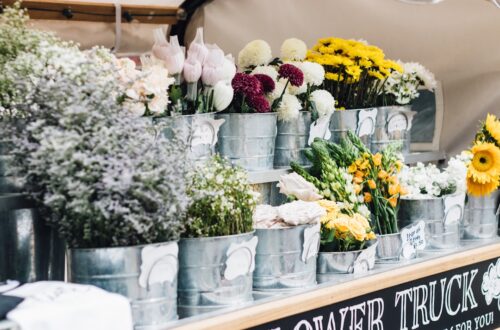Sheisatang, also known as “Sheisato” or “Sheisatang tea,” has a rich history that dates back thousands of years. Originating in China, Sheisatang is a traditional herbal tea that has been used for its medicinal properties for centuries. The name “Sheisatang” is derived from the Chinese words “shei” meaning “rock” and “satang” meaning “sugar,” which refers to the sweet taste of the tea.
According to historical records, Sheisatang was first discovered during the Tang Dynasty (618-907 AD) in China. It was initially used as a medicinal herb to treat various ailments such as indigestion, inflammation, and respiratory problems. Over time, Sheisatang gained popularity and became a staple in traditional Chinese medicine. It was also highly valued for its ability to promote relaxation and improve overall well-being.
As trade routes expanded, Sheisatang made its way to other parts of Asia, including Japan and Korea, where it became an integral part of their traditional medicine systems. Today, Sheisatang is enjoyed by people all over the world for its unique flavor and numerous health benefits.
Sheisatang has a long and storied history, with its origins dating back to ancient China. The tea has been used for centuries as a natural remedy for various health issues and has played a significant role in traditional medicine systems across Asia. Its sweet taste and medicinal properties have made it a beloved beverage for generations.
Key Takeaways
- Sheisatang has a long history dating back to ancient times, with its origins rooted in traditional Chinese medicine and culture.
- The benefits of Sheisatang include its ability to improve digestion, boost immunity, and promote overall well-being.
- You can easily incorporate Sheisatang into your daily routine by brewing it as a tea or adding it to soups and stews.
- Sheisatang plays a significant role in traditional medicine, where it is used to treat a variety of ailments and promote healing.
- There are different varieties of Sheisatang available, each with its own unique flavor and medicinal properties.
- Sheisatang holds cultural significance in Chinese and other Asian cultures, often being used in ceremonies and celebrations.
- When purchasing Sheisatang, look for high-quality, organic options and store it in a cool, dry place to maintain its freshness and potency.
Understanding the Benefits of Sheisatang
Sheisatang is renowned for its numerous health benefits, making it a popular choice for those seeking natural remedies and wellness. The tea is rich in antioxidants, which help to combat free radicals in the body and reduce the risk of chronic diseases. Additionally, Sheisatang contains polyphenols, which have anti-inflammatory properties and can help to improve digestion and boost the immune system.
One of the most well-known benefits of Sheisatang is its ability to promote relaxation and reduce stress. The tea contains an amino acid called L-theanine, which has been shown to have calming effects on the mind and body. This makes Sheisatang an excellent choice for those looking to unwind after a long day or improve their overall mental well-being.
Furthermore, Sheisatang has been linked to improved heart health, as it may help to lower cholesterol levels and reduce the risk of cardiovascular disease. Its natural sweetness also makes it a great alternative to sugary drinks, helping to support weight management and reduce the risk of diabetes.
Incorporating Sheisatang into your daily routine can provide a wide range of health benefits, from reducing inflammation and boosting the immune system to promoting relaxation and improving heart health. Its rich antioxidant content and calming properties make it a valuable addition to any wellness regimen.
How to Incorporate Sheisatang into Your Daily Routine
Incorporating Sheisatang into your daily routine is easy and can be done in a variety of ways. One of the most common methods is to simply brew the tea using hot water and enjoy it as a soothing beverage. You can also add honey or lemon for extra flavor, or even mix it with other herbal teas for a unique blend.
Another popular way to enjoy Sheisatang is by using it as a base for smoothies or iced drinks. Simply brew the tea as usual, then let it cool before adding it to your favorite smoothie recipe or mixing it with fruit juice for a refreshing summer beverage.
For those who prefer a more concentrated dose of Sheisatang, it can also be taken in supplement form. Sheisatang supplements are available in various forms, including capsules and powders, making it easy to incorporate into your daily routine.
Whether you prefer to enjoy Sheisatang as a hot beverage, a refreshing iced drink, or as a supplement, there are plenty of ways to make this ancient herbal tea a part of your daily wellness regimen.
Sheisatang and its Role in Traditional Medicine
| Plant Name | Sheisatang |
|---|---|
| Role in Traditional Medicine | Used for treating digestive disorders, fever, and inflammation |
| Active Compounds | Flavonoids, alkaloids, tannins |
| Traditional Uses | Relief from diarrhea, dysentery, and stomach ache |
Sheisatang has played a significant role in traditional medicine systems across Asia for centuries. In traditional Chinese medicine, Sheisatang is believed to have cooling properties that can help to balance the body’s energy and promote overall well-being. It is often used to treat conditions such as indigestion, inflammation, and respiratory problems.
In Japan, Sheisatang is known as “Seicha” and is highly valued for its ability to promote relaxation and reduce stress. It is often used in tea ceremonies as a way to cultivate mindfulness and inner peace. In Korean traditional medicine, Sheisatang is used to improve digestion and boost the immune system, as well as to support heart health.
In addition to its use in traditional medicine, Sheisatang has also been studied for its potential therapeutic effects in modern scientific research. Studies have shown that Sheisatang may have anti-inflammatory, antioxidant, and neuroprotective properties, making it a promising natural remedy for various health conditions.
The rich history of Sheisatang in traditional medicine systems across Asia speaks to its enduring value as a natural remedy for promoting health and wellness. Its cooling properties and potential therapeutic effects make it a valuable asset in both traditional and modern healthcare practices.
Exploring the Different Varieties of Sheisatang
Sheisatang comes in several different varieties, each with its own unique flavor profile and potential health benefits. The most common type of Sheisatang is made from the leaves of the Camellia sinensis plant, which is also used to make green tea and black tea. This type of Sheisatang is known for its sweet taste and calming properties, making it a popular choice for relaxation and stress relief.
Another variety of Sheisatang is made from the leaves of the Aspalathus linearis plant, which is native to South Africa. This type of Sheisatang, known as “Rooibos tea,” has a slightly nutty flavor and is caffeine-free, making it a great choice for those looking to reduce their caffeine intake or enjoy a soothing beverage before bed.
There are also herbal varieties of Sheisatang that are made from a blend of different herbs and botanicals, such as chamomile, lavender, or peppermint. These herbal blends offer a wide range of flavors and potential health benefits, from promoting relaxation to supporting digestion and immune function.
Exploring the different varieties of Sheisatang allows you to find the perfect option that suits your taste preferences and wellness goals. Whether you prefer the sweet taste of traditional Sheisatang made from Camellia sinensis leaves or the caffeine-free nuttiness of Rooibos tea, there’s a variety of Sheisatang out there for everyone.
The Cultural Significance of Sheisatang

Sheisatang holds significant cultural importance in various Asian countries, where it is deeply ingrained in traditions and customs. In China, Sheisatang is often served during important social gatherings and ceremonies as a symbol of hospitality and respect. It is also commonly enjoyed during family gatherings and celebrations as a way to bring people together and foster connections.
In Japan, Sheisatang is an integral part of the country’s tea culture and is often used in traditional tea ceremonies as a way to cultivate mindfulness and appreciation for the present moment. The preparation and serving of Sheisatang in Japan are considered an art form, with strict rituals and etiquette that have been passed down through generations.
In Korea, Sheisatang holds cultural significance as well, where it is enjoyed as a way to promote relaxation and social bonding. It is often served during formal occasions and gatherings as a gesture of hospitality and goodwill.
The cultural significance of Sheisatang extends beyond its medicinal properties, playing an important role in social customs and traditions across Asia. Its presence in social gatherings, ceremonies, and tea culture reflects its deep-rooted importance in fostering connections and promoting mindfulness.
Sheisatang: Tips for Purchasing and Storing
When purchasing Sheisatang, it’s important to look for high-quality products that are sourced from reputable suppliers. Look for organic or wild-crafted varieties whenever possible to ensure that you’re getting the purest form of Sheisatang without any added chemicals or pesticides.
When storing Sheisatang, it’s best to keep it in an airtight container away from direct sunlight and moisture. This will help to preserve its freshness and flavor for longer periods. If you’re purchasing loose-leaf Sheisatang, consider investing in a tea tin or glass jar with a tight-fitting lid to keep it fresh.
If you prefer the convenience of teabags, be sure to store them in their original packaging or transfer them to an airtight container to maintain their quality. Keep them in a cool, dry place away from strong odors that could affect their flavor.
By following these tips for purchasing and storing Sheisatang, you can ensure that you’re getting the best quality product while preserving its freshness for optimal enjoyment. Whether you prefer loose-leaf or teabag varieties, proper storage will help you make the most out of your Sheisatang experience.
If you’re interested in learning more about personal branding and how it can impact your career, check out this article on thevivoteam.com. It provides valuable insights and tips on how to build a strong personal brand, which is essential for success in today’s competitive job market. Building a personal brand is crucial for professionals like sheisatang, as it can help them stand out and attract opportunities in their industry.
FAQs
What is “sheisatang”?
“sheisatang” is a term that refers to a specific topic or concept. It could be a person, a place, an idea, or a thing.
Where does the term “sheisatang” come from?
The origin of the term “sheisatang” is not clear, and it may have different meanings or interpretations depending on the context in which it is used.
How is “sheisatang” used in conversation?
The term “sheisatang” may be used in various ways in conversation, depending on the specific meaning or context it is being used in. It could be used as a noun, a verb, an adjective, or an exclamation.
Is “sheisatang” a commonly used term?
The popularity and common usage of the term “sheisatang” may vary depending on the specific community or group of people using it. It may be more commonly used in certain regions or among specific demographics.
Can “sheisatang” have different meanings?
Yes, the term “sheisatang” can have different meanings depending on the context in which it is used. It may have specific meanings within certain communities or subcultures.





